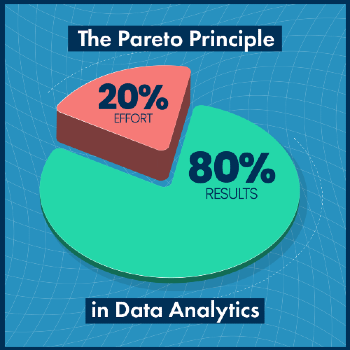My name is Prak Swamy, Founding PMM at Ownwell, and I’ve been the first product marketer at almost every organization I’ve been involved in. In this article, I’ll share what I’ve learned in my career to help you:
- Find early wins as a founding PMM
- Understand where PMM fits within the GTM landscape
- How to learn from unsuccessful GTM initiatives
- Utilize the 80-20 rule in PMM
Let’s get started. 👇
Finding early wins as a founding PMM
Being the first product marketer at a company can be challenging, especially when they may not know what to expect from a PMM.
What helps is speaking to as many internal teams as possible and understanding what they’re working on. You can use that to identify areas of opportunity or gaps that, as a founding PMM, you can help support with.
It might look like an immediate win, something like:
“Hey, you've got a sales meeting that's coming up. It's the third or fourth call – one that might lead to a close – how can I help you or support you? Should I put together something for your meeting?”
That’s immediately helpful and shows other teams the value you can provide as a PMM.
Sales
With the sales team, providing sales enablement collateral is a great quick win opportunity. It could be a one-pager on competitive positioning if your product has been around for a while, and you’re pretty competitive in the market with other vendors, for example. Battle cards are great tools too.
Product
When it comes to identifying quick wins that can support the product team, the key is being able to help them understand what messaging is resonating with the current prospects.
I encourage you to take part in brainstorming sessions with the product team on what they're building - they have their own “why” and their own definition of the ICP - it’s critical that you can see their perspective.
Aligning with them on those factors allows you to then build out how you want to communicate, and select what challenges you want to use. It also provides an opportunity to ask questions like, “Do we need to do a webinar?”.
Marketing
With the marketing team, you can find wins across various marketing channels. Marketing needs to have resources on all your ICPs - so ask yourself what sort of messaging you have right now and how you’re going to communicate that to your audiences.
That’ll help you quickly identify gaps that you can fill as PMM. Think about the ‘simple’ stuff - ensuring your ad copy, your website, and so on are not just feature-based, but value-based, for example.

Where does PMM fit within the GTM landscape?
PMM is an inherently cross-functional role, but it’s important to think about where it fits in the bigger GTM picture.
It depends on the current organizational structure, but based on my experience at B2B companies, I find it’s better if product marketing sits within marketing.
Within marketing
I say this because when you're going to market as a PMM, you want to be able to influence every channel as much as possible – the whole point of go-to-market is adoption, and marketing is best placed to influence that.
As a result, being part of the marketing team is usually the right place for a PMM, unless there's specifically a GTM org and product marketers sit within that.
Within product
I've also been part of the product team, and that can make sense too, depending on your circumstances. You become very aware of what's happening with your product and how it's evolving – especially if you’re a company that's been around for a long time.
Sitting within the product team has its benefits, but I feel like I've seen the most value in my role when I'm part of the marketing team. There, I’m able to influence the different marketing stakeholders to drive campaigns and to get products out there.

What can you learn from unsuccessful GTM initiatives?
We can learn just as much from initiatives that don’t go as well as from those that succeed. One thing to be wary of is when you want to move quickly.
Naturally, your organization wants to increase adoption rapidly, and so the product team finds itself constantly iterating, discovering opportunities, and saying “this company is doing this, let’s copy it”, or “let’s do that too”.
What tends to happen – I know as I've led some launches like this – is that there’s no clear definition of the ICP or who to go after.
If the product roadmap is not aligned with the go-to-market roadmap, you’ll walk into trouble.
If, for example, you're building a specific feature that's beneficial to an SMB segment, but you're trying to first sell to enterprise segments – that's a clear failure of alignment.
Oftentimes, we’re eager to go after enterprise segments because once you close a couple of those deals you hit your targets, but the risk then is that you haven’t achieved product-market fit.
From a product marketing standpoint, it’s about nailing down research so that you're able to communicate and influence not only the go-to-market roadmap, but also the product development roadmap – this is critical.

Utilize the 80-20 rule in PMM
A word of advice to all PMMs: Often, it’s easy to say “we'll do 10 channels; we'll use every single different avenue that we can to go to market”.
But, when we consider the 80-20 rule, only 20% of those are probably going to work effectively.

That's the secret sauce to cracking the code of adoption and knowing which channels are going to work. It’s worth spending a lot of time to figure that out.
For example, in the PropTech space, we’ve never seen account-based marketing be successful. At least, we haven’t at the companies I've been at – but that technique works for a lot of other tech companies in different verticals.
So put in the time to understand the channels that are most effective in your current organization, as that’s the critical element towards being able to iterate and better execute on those channels in the future.
Looking for more GTM insights?
Become a GTMA Insider and receive free access to exclusive articles, OnDemand footage, templates, and more from community members just like Prak!




 Follow us on LinkedIn
Follow us on LinkedIn





